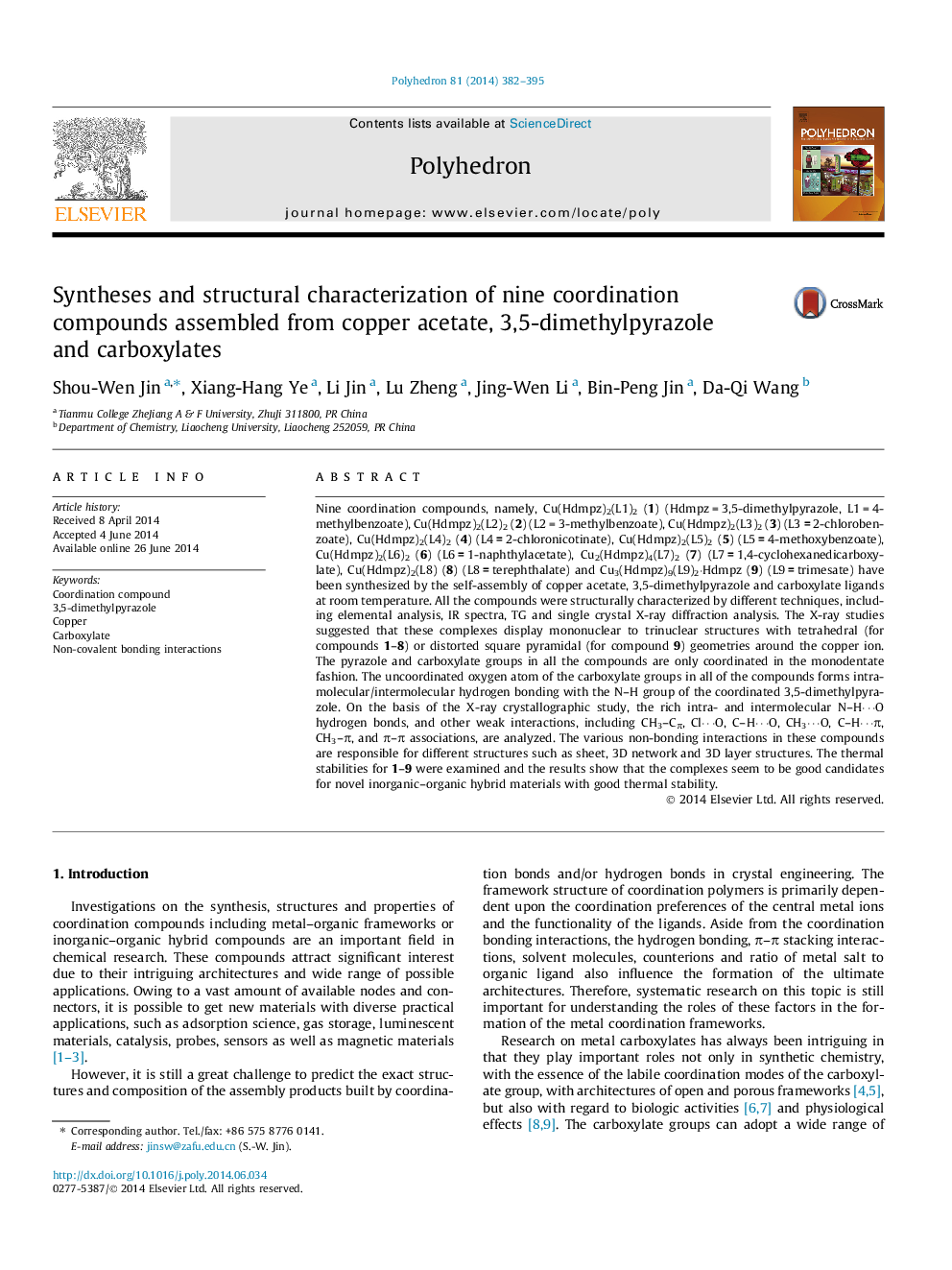| Article ID | Journal | Published Year | Pages | File Type |
|---|---|---|---|---|
| 1334444 | Polyhedron | 2014 | 14 Pages |
Nine coordination compounds, namely, Cu(Hdmpz)2(L1)2 (1) (Hdmpz = 3,5-dimethylpyrazole, L1 = 4-methylbenzoate), Cu(Hdmpz)2(L2)2 (2) (L2 = 3-methylbenzoate), Cu(Hdmpz)2(L3)2 (3) (L3 = 2-chlorobenzoate), Cu(Hdmpz)2(L4)2 (4) (L4 = 2-chloronicotinate), Cu(Hdmpz)2(L5)2 (5) (L5 = 4-methoxybenzoate), Cu(Hdmpz)2(L6)2 (6) (L6 = 1-naphthylacetate), Cu2(Hdmpz)4(L7)2 (7) (L7 = 1,4-cyclohexanedicarboxylate), Cu(Hdmpz)2(L8) (8) (L8 = terephthalate) and Cu3(Hdmpz)9(L9)2·Hdmpz (9) (L9 = trimesate) have been synthesized by the self-assembly of copper acetate, 3,5-dimethylpyrazole and carboxylate ligands at room temperature. All the compounds were structurally characterized by different techniques, including elemental analysis, IR spectra, TG and single crystal X-ray diffraction analysis. The X-ray studies suggested that these complexes display mononuclear to trinuclear structures with tetrahedral (for compounds 1–8) or distorted square pyramidal (for compound 9) geometries around the copper ion. The pyrazole and carboxylate groups in all the compounds are only coordinated in the monodentate fashion. The uncoordinated oxygen atom of the carboxylate groups in all of the compounds forms intramolecular/intermolecular hydrogen bonding with the N–H group of the coordinated 3,5-dimethylpyrazole. On the basis of the X-ray crystallographic study, the rich intra- and intermolecular N–H⋯O hydrogen bonds, and other weak interactions, including CH3–Cπ, Cl⋯O, C–H⋯O, CH3⋯O, C–H⋯π, CH3–π, and π–π associations, are analyzed. The various non-bonding interactions in these compounds are responsible for different structures such as sheet, 3D network and 3D layer structures. The thermal stabilities for 1–9 were examined and the results show that the complexes seem to be good candidates for novel inorganic–organic hybrid materials with good thermal stability.
Graphical abstractDue to the synergetic effect of weak non-covalent bonding interactions, the complexes display 2D–3D structures.Figure optionsDownload full-size imageDownload as PowerPoint slide
